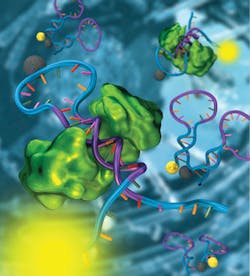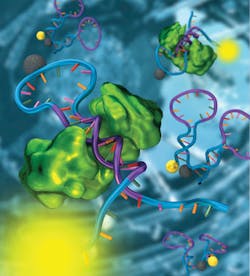PERSONALIZED MEDICINE/FLUORESCENCE IMAGING: Fluorescing engineered DNA promises personalized cancer therapy, stem cell quality monitoring
Biophotonic nanosensors made from custom DNA molecules promise to enable personalized cancer treatments and monitoring of stem cell quality. Researchers from the University of California, Santa Barbara (UCSB, USA) and the University of Rome Tor Vergata (Italy) developed the sensors, which can quickly detect a broad class of proteins called transcription factors. The transcription factors then read the genome and translate it into instructions to synthesize the various molecules that compose and control the cell.1
Specifically, the team re-engineered three naturally occurring DNA sequences, each recognizing a different transcription factor, into molecular switches that become fluorescent when they bind to their intended targets. Using these nanometer-scale sensors, the researchers were able determine transcription factor activity directly in cellular extracts by simply measuring their fluorescence level.
The researchers believe this strategy will ultimately allow biologists to monitor the activation of thousands of transcription factors, leading to a better understanding of the mechanisms underlying cell division and development; or to screen and test new drugs that could, for example, inhibit transcription-factor binding activity responsible for the growth of tumor cells.
1. A. Vallee-Belisle et al., J. Amer. Chem. Soc. 133, 35, 13836–13839 (2011).
More BioOptics World Current Issue Articles
More BioOptics World Archives Issue Articles

